Pancam Team
This is a list of past and present team members who have been involved in Pancam Instrument development, commanding, and processing.
JACOB ADLER
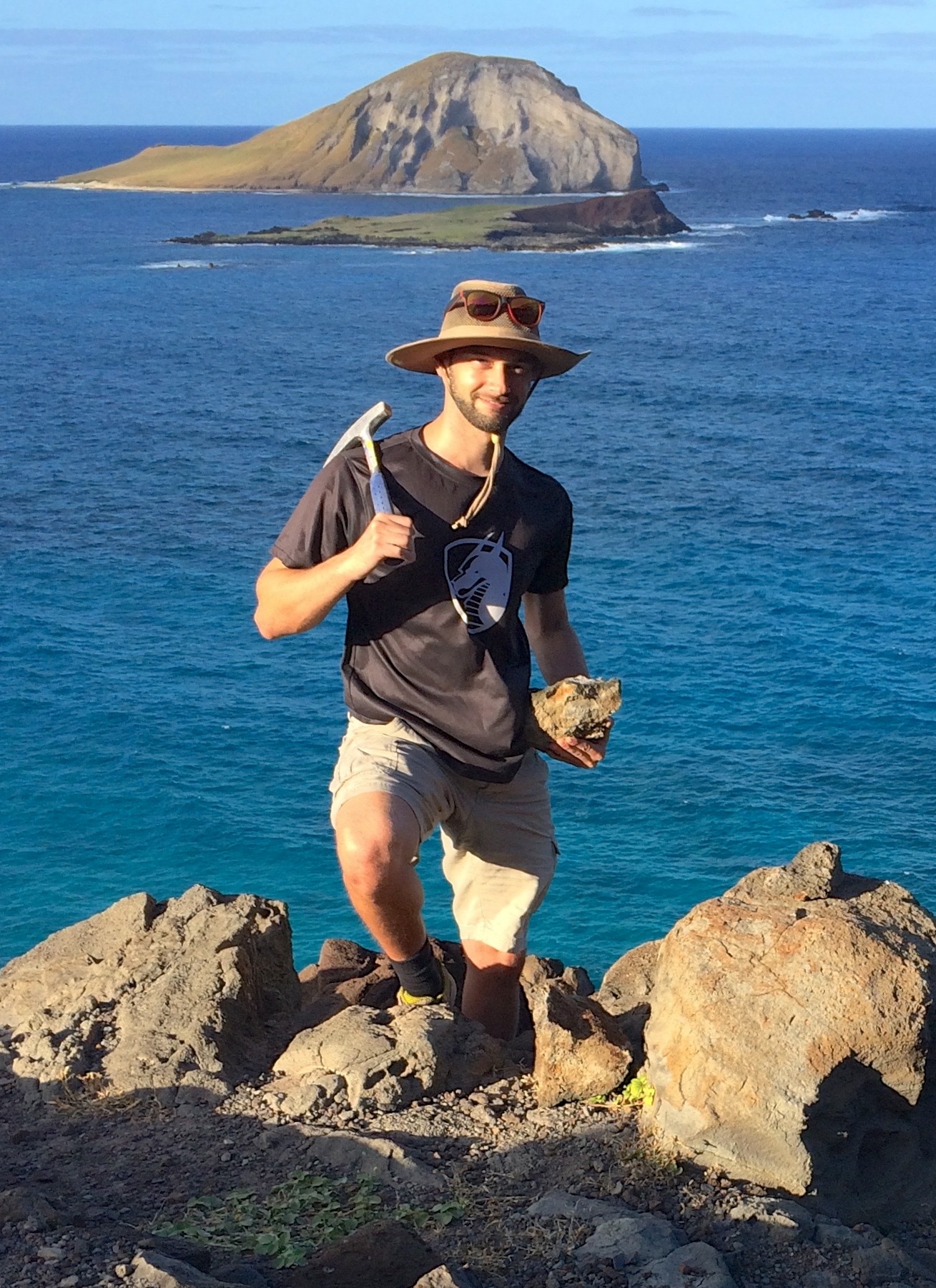
Jacob is a Ph.D. student with Jim Bell at Arizona State University working on the aqueous history and mineralogic stratigraphy of Mars. Jacob received his B.S. in Geophysics and Space Physics from the University of California, Los Angeles in 2013. He has supported the MER team as a Pancam Payload Downlink Lead (PDL) since 2015. He also enjoys characterizing past rover landing sites and locating sites worthy of future missions. In his free time, Jacob likes to play sports or be outdoors. He is an avid ultimate frisbee player, as well as a baseball, tennis, and rock climbing enthusiast. He was a former president of the UCLA astronomy club, and serves as telescope manager for the SESE Open House.
RYAN ANDERSON
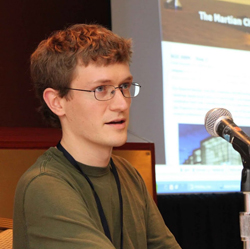
Ryan was one of Jim's graduate students at Cornell and joined the Pancam team in 2007. He is now the Shoemaker Postdoctoral fellow at the USGS Astrogeology Science Center in Flagstaff, AZ. He is interested in quantitative geomorphology, geochemistry, and mineralogy of the planets (especially Mars). He is also interested in multivariate analysis and data processing (using computers to help humans make sense of large, complicated datasets). Ryan is a member of the ChemCam science team on the Mars Science Laboratory (MSL) mission, where he serves as a science Payload Downlink Lead (PDL) and Payload Uplink Lead (PUL), and works on processing and interpreting ChemCam data. When he is not being a martian, Ryan likes to read and write speculative fiction, hike with his wife and dogs, cook good food, and play board and video games. Ryan used to blog here, (mostly about science) and now blogs here, (mostly about fiction).
HEATHER ARNESON

I graduated from Cornell University with a B.S. in Mechanical Engineering in May of 2002. After graduation I began working for Jim Bell on the Pancam Team. In the Summer and Fall of 2002 I was at NASA's Jet Propulsion Laboratory helping out with the calibration of all 20 MER flight cameras and several flight spares and engineering models. When calibration was complete, I began working on the analysis of some of the Pancam calibration data and preparing to be a Pancam Payload Uplink Lead (PUL) and Payload Downlink Lead (PDL). From the time the rovers landed in January of 2004 until May of 2005, I worked primarily as a Pancam PUL. As a Pancam PUL I wrote sequences to take images with the Pancams. In August 2005 I began work on my Master of Science degree in Aerospace Engineering at the University of Illinois at Urbana-Champaign. My research interests include dynamics, control, robotics, space and planetary exploration...
JIM BELL
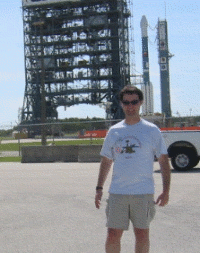
Jim Bell, a Professor at Arizona State University's School of Earth and Space Exploration, is the leader of the Pancam color camera team on the Mars Exploration Rovers Spirit and Opportunity. Academically, he received his B.S. from Caltech in 1987, his Ph.D. from the University of Hawaii in 1992, was a National Research Council postdoctoral research fellow at NASA's Ames Research Center, and was an Assistant Professor in Cornell University's Astronomy Department prior to accepting his position at ASU. His studies primarily focus on the geology, geochemistry, and mineralogy of planets, moons, asteroids, and comets using data obtained from telescopes and spacecraft missions. In addition to MER, Jim is a member of the science teams of the NASA Mars Pathfinder, Near Earth Asteroid Rendezvous (NEAR), Mars Odyssey Orbiter, Mars Reconnaissance Orbiter, and 2009 Mars Science Laboratory missions. He has published many papers, abstracts, book chapters, and articles related to his research, has edited a book about the NEAR mission, and is currently editing a new academic book about Mars. Jim's coffee table picture book of rover images called Postcards from Mars was published by Dutton/Penguin in 2006. Jim is a rabid Red Sox fan who throws left but bats right and finished the 2006 town league summer softball season with a .705 batting average.
KRISTEN BENNETT
Kristen works with Jim Bell at Arizona State University.
DIANE M. BOLLEN

I have been involved with the Athena project from the very beginning. I worked with Steve Squyres and his colleagues at the Jet Propulsion Lab in Pasadena, California writing the original proposal in 1997. Since that time, I have taken on many roles including creating blind calibration samples for the APXS for the APEX mission, taking on a mission operations role as documentarian and KOP on MER, being part of the pancam calibration team, and making classroom visits where I teach kids about Mars and the mission.
Before delving into a career in space science, I focused on matters of this planet, working on watershed geochemistry in the Department of Ecology. I have also been an associate editor of a science journal, and an assistant museum curator. Then came Mars. There are many cool things about being involved with the Mars Exploration Rover mission. It is on the "cutting edge " of science -- we are trying to do things that have NEVER been done before. Since I have a strong biology and geochemistry background, I am intrigued by the idea that Mars once may have had conditions very similar to early Earth - when life first came about.
Mars demands most of my attention these days. Still, I am able to find time to be a musician, a writer, and an artist.
COLLEGIATE CALIBRATION CREW
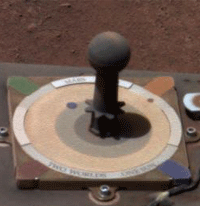
Visit the Collegiate Calibration Crew (CCC) page for a list of CCC team members.
MATT CHOJNACKI
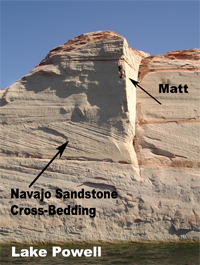
Matt is a Postdoctoral Research Associate at the University of Arizona's Lunar and Planetary Laboratory. He has been supporting the MER team as a Pancam Payload Downlink Lead (PDL) since 2009. After receiving his PhD in Planetary Science at the University of Tennessee he moved to Tuscon in 2013 to join the High Resolution Imaging Science Experiment (HiRISE) science team (onboard the Mars Reconnaissance Orbiter) which frequently images Opportunity from orbit. He also has collaborated with Mars Odyssey's THEMIS science team since 2005. In addition to supporting MER and HiRISE operations, his recent research has focused on the geologic, morphologic, and climatic evolutions of Mars, particularly: the thermophysical and spectral properties of the Martian surface, aqueous alteration and weathering of planetary crusts, aeolian transport and sand dune dynamics, and terrestrial analog studies. When not studying the Red Planet, Matt skis, swims, hikes or bikes, preferably in the mountains or desert!
EMILY DEAN
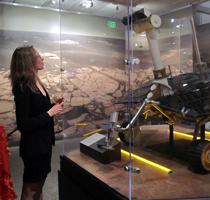
Emily started working with the Mars Exploration Rover team in 1998 as a high school student intern. She was introduced to the mission at Cornell University through an outreach program called LAPIS, which exposed her team to Mars exploration, mission planning, and remote rover operations. While earning a degree in Art and Architectural History at Ithaca College, she continued to support the MER mission until 2005, when she took a full time operations position at Cornell. Since then, she has served as a Documentarian, a "Keeper of the Plan," and a Pancam Payload Uplink Lead (Martian landscape photographer). She has also taken up the maintenance of this website. With a deep interest in both science and the arts, she considers herself incredibly lucky to be part of such a demanding and fulfilling combination of the two.
ELDAR NOE DOBREA
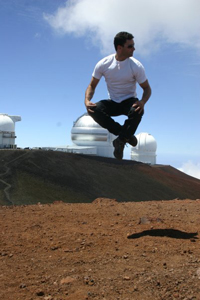
Eldar Noe Dobrea (END) is a planetary scientist (PS) working for the Planetary Science Institute (PSI) at the Jet Propulsion Laboratory (JPL). He began working on the Mars Exploration Rover (MER) project as a first year graduate student (FYGS) at Cornell University (CU), but was soon diverted to develop software for the Near Earth Asteroid Rendezvous (NEAR) mission, and subsequently to work on his thesis (T). That being said, he wrote a thesis on Spectroscopic detection of water alteration products on Mars (ABCDEFG) and submitted in Aug 2004 (08/04), a few months after both MER and the Observatoire for La Mineralogie, L'Eau, la Glace, et l'Activite (OMEGA) both presented the first evidence for ABCDEFG. Since then, he has worked at Malin Space Science Systems (MS³), University of California at Santa Cruz (UCSC), and JPL. He is interested in studying the geological context of past and present water on Mars, and its implications to the development and retention of life on the Red (Ocre, actually) planet. He is a Participating Scientist (PS, nill planetary scientist) on the Mars Reconnaissance Orbiter (MRO), and has become Payload Downlink Lead (PDL) on MER as of May of 2009 (05/09). His work in the planetary sciences, especially at JPL, has taught him how to use acronyms out the wazoo (WZ).
LIZ DYER
Liz works with Jim Bell at Arizona State University.
LAUREN EDGAR

Lauren is a postdoctoral fellow in the School of Earth and Space Exploration at Arizona State University. Her research aims to understand Martian surface processes through the use of rover and orbital observations and terrestrial field analogs. She uses sedimentology, stratigraphy and geomorphology to infer past surface processes involving water, wind, ice and volcanic activity, and to identify potentially habitable environments on Mars. Lauren earned her B.A. in Earth Sciences modified with Engineering Sciences from Dartmouth College in 2007, and her Ph.D. in Geology from Caltech in 2013. She has been involved in the MER mission since 2007, and is also a member of the Mars Science Laboratory team.
BILL FARRAND
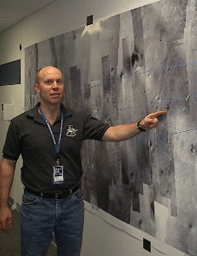
Bill Farrand is a research scientist at the Space Science Institute in Boulder, Colorado. He has a B.A. in Geology from Franklin & Marshall College and a M.S. and Ph.D. in the Geosciences from the University of Arizona. He has worked extensively in terrestrial remote sensing as well as in the field of planetary science. In the terrestrial remote sensing field, Bill has worked extensively with data from airborne "hyperspectral" remote sensing systems for both commercial and government programs. He also has extensive experience in collecting reflectance spectra out in the field with field portable spectrometers. In 2002, Bill was selected as a Participating Scientist on NASA's Mars Exploration Rover (MER) Mission. For the MER mission, Bill has worked with the Mineralogy/Geochemistry Science Theme Group and has helped the Pancam team as a Payload Downlink Lead. Bill has worked extensively with Pancam data from both rovers looking at the multispectral reflectance properties of rocks at both Gusev Crater and Meridiani Planum. In his free time, Bill is an avid rock climber and also enjoys skiing, hiking, taking his dog on walks, and pursuing useless TV trivia.
AUSTIN GODBER
Austin works with Jim Bell at Arizona State University.
JUSTIN HAGERTY
Justin is a Research Geologist at the U.S.G.S Astrogeology Science Center in Flagstaff, AZ. As part of his master's research at the University of New Mexico, Justin investigated the potential for impact-induced hydrothermal activity at Lonar crater, India and its implications for impact cratering on Mars. He obtained a Ph.D. in Earth and Planetary Sciences at the University of New Mexico (2004) while studying the trace element geochemistry of basaltic magmatism on terrestrial planets. He then held a post-doctoral position at Los Alamos National Laboratory, where he studied gamma ray and neutron spectroscopy in an effort to learn more about the global distribution of trace elements on terrestrial planets. Justin started at the USGS Astrogeology Science Center in 2007 and has since worked on integrating sample and remote sensing data to more effectively investigate planetary bodies. He has been involved in downlink duties for the Pancam, Microscopic Imager and Engineering Cameras since 2007.
ALEX HAYES
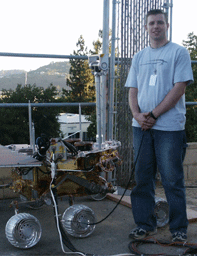
I began working on the MER mission as a Cornell freshman in 1999. In Spring 2003 I graduated with a BA in Astronomy and Astrobiology. My senior thesis revolved around instrument co-registration and calibration. I received a MENG from the Applied and Engineering Physics Department in December 2003. My masters thesis involved co-registration between the Pancam, Navcam, and Mini-TES instruments. During mission operations my official duties were Pancam PDL, MI PUL, and MI PDL. Currently, I run research operations in a cryogenic infra-red signature laboratory at MIT Lincoln Laboratory in Lexington, MA. The laboratory primarily supports and air and missile defense programs for the Department of Defense. Next fall I plan to leave the dark side and return to planetary science in order to pursue a Ph.D. My research interests involve spacecraft instrumentation and interdisciplinary astronomical exploration (both robotic and human).
KEN HERKENHOFF
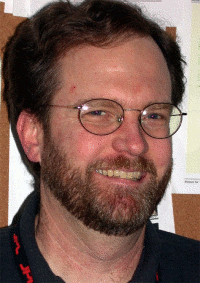
Ken Herkenhoff is a member of the Astrogeology team of the U.S. Geological Survey. He received his Ph.D. in planetary science and M.S. in Geology from the California Institute of Technology. He has previously worked for the Jet Propulsion Laboratory in Pasadena, serving as a participating scientist on the Mars Observer/Mars Global Surveyor mission, a principal investigator for the NASA Planetary Geology and Planetary Mapping programs and as a team member for multiple other missions including Mars Surveyor and Pathfinder. He is currently the Microscopic Imager payload element lead on the MER mission.
JEFF JOHNSON
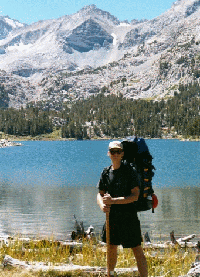
Jeff is a Research Geologist at the U.S. Geological Survey in Flagstaff, AZ. After obtaining a degree in geology at the University of Michigan in 1988, he worked as a NASA summer intern at the U.S. Geological Survey (USGS) in Flagstaff, AZ. He then pursued graduate studies at the University of Arizona in Tucson, where he studied the Moon and Venus. Following graduation in 1994, he held a post-doctoral position for two years at the University of Hawaii studying infrared imaging and spectroscopy. Jeff then moved back to Arizona and held the first Eugene M. Shoemaker Planetary Geology and Geophysics Fellow at the USGS in Flagstaff from 1997-1999. He participated in the Mars Pathfinder and Mars Polar Lander missions, and as a Guest Investigator on the Mars Global Surveyor mission. He was selected as a Participating Scientist for the MER missions and has been involved in uplink and downlink duties for the Pancam, Microscopic Imager and Engineering Cameras, as well as data analysis as part of the Mineralogy/Geochemistry Science Theme Group.
MILES JOHNSON

I received a BS in Mechanical & Aerospace Engineering from Cornell University in 2002, after which I started working for Jim Bell on the Pancam Calibration team. Soon after calibration, I started working on Pancam flight operations as a Payload Downlink Lead and Payload Uplink Lead. In addition to tracking and organizing Pancam data and writing Pancam sequences, I enjoy playing with Perl and causing trouble around the office. My general research interests are robotic and human planetary exploration, spacecraft design and modeling, guidance, navigation and control, and astrodynamics.
JONATHAN JOSEPH
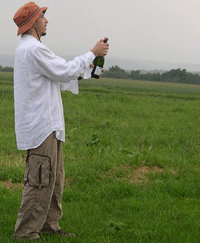
Jonathan Joseph is the programming lead for the Pancam calibration and quick-look mosaicking software, and has played a leading role in the development of all of the Pancam data processing and analysis tools. Prior to working on MER, Jonathan developed observation planning and scientific analysis tools for the successful Near Earth Asteroid Rendezvous mission to 433 Eros and the (sadly, unsuccessful) CONTOUR comet flyby mission.
KJARTAN KINCH
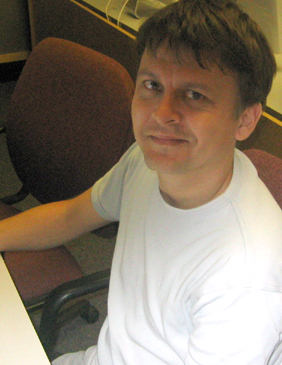
Kjartan first got involved with the Mars Exploration Rovers as a graduate student in the Danish magnet properties team. He graduated with a Ph.D. in physics from Aarhus University, Denmark in March 2005; the thesis work being focused on aerodynamics of martian dust motion as it relates to dust capture on the rover magnets. He is now at Cornell University where he holds a temporary post doc. position and works as a Pancam PDL as well as continuing to work on the properties of martian airborne dust. In Denmark he used to go sailing and rollerskating, play soccer and board games, and dress up in medieval costumes. These days he mostly spends his free time biking or reading about history, politics, biology, codfish, and anything else that catches his fancy.
MARK LEMMON
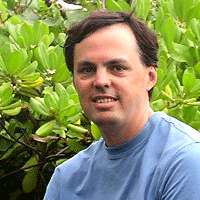
Mark Lemmon is an Associate Professor in the Atmospheric Sciences Department at Texas A&M University. He received his Ph.D. in Planetary Sciences from the University of Arizona in 1994, with researching the structure of hazes in the atmosphere of Saturn's moon Titan, and making observations that showed the atmosphere to be transparent in the infrared. After working with Peter Smith to map Titan's surface with infrared Hubble Space Telescope images, he joined the Imager for Mars Pathfinder team as a postdoc. Despite a detour as a postdoc on Mars Polar Lander until it crashed, he remains active in Mars Exploration. For MER, in addition to acting as a downlink lead for Pancam, he is one of the Atmospheric Science Theme Group leads. In between MER downlinks, he is the Instrument Co-Investigator responsible for the Surface Stereo Imager on Phoenix, the next mission to land on Mars, and is on the camera team for Mars Science Laboratory.
MORTEN BO MADSEN
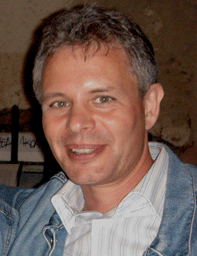
Morten Bo Madsen is an Associate Professor at the Niels Bohr Institute, where he teaches fundamental electromagnetism and quantum physics, as well as occasionally Mossbauer spectroscopy and Planetary Science. Morten lives in Dyssegaard, a suburb of Copenhagen, with his wife Elsebeth, son Mikkel, daughter Stine, and her cat and bird. Morten received his Ph.D. in physics from the Technical University of Denmark in 1986, performing research on microcrystalline oxides and oxyhydroxides using Mossbauer spectroscopy and other experimental techniques. He worked with the Department of Physics and the Haldor Topsoe Company on properties of a potential catalytical system and on primitive meteorites (carbonaceous chondrites) prior to coming to the University of Copenhagen. At the Niels Bohr Institute, his studies focus primarily on the physics, geochemistry, and mineralogy of Martian surface materials. He leads a small research group that is particularly interested in the airborne dust - and in the information this dust has to offer about the history of development of the surface of Mars. He is a member of the Science Teams of the NASA Mars Pathfinder mission, Mars Exploration Rover (Athena) missions, and on the NASA Phoenix mission.
ELAINA MCCARTNEY
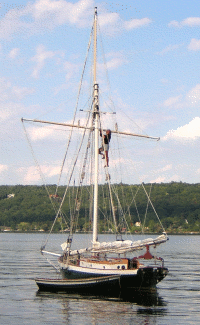
Elaina McCartney is a Pancam Payload Uplink Lead (PUL) and Keeper of the Plan (KOP) for MER. She has two degrees from Cornell University, a B.A. in English Literature from back before there were hand-held calculators, xerox machines, desktop computers, or cell phones, and later a Master of Engineering degree in Computer Science, specializing in Computational Fluid Dynamics, 3-D visualization of fluid flows, robot vision, and computer graphics. She has flown >600 parabolas on NASA's KC-135 doing experiments in granular flows of binary spheres. She wrote sequences and mapped data for the Near Earth Asteroid Rendezvous Mission to Eros (NEAR) as a member of the X-Ray/Gamma Ray Spectrometer team. She participated in the development of the APEX mission (canceled), has been a member of the Cassini imaging team, and has known the MER twins since before they were born. She sails an antique Atkins-design wooden cutter, hikes, bikes, watches birds, and reads science fiction.
TIM MCCOY
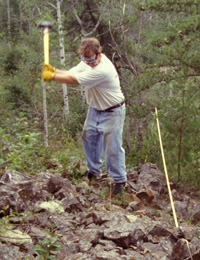
Tim McCoy is the curator of meteorites at the Smithsonian's National Museum of Natural History in Washington, DC. He is far more used to looking at rocks from Mars than he is to looking at images of Mars. His background is in meteorite petrology, mineralogy and geochemistry. He earned an M.S. from the Univ. of New Mexico in 1990, a Ph.D. from the University of Hawaii in 1994 and was an NRC Postdoctoral Fellow at Johnson Space Center from 1994-1996. He has spent the last decade in Washington. His major research interest is the differentiation of asteroids in the early history of the Solar System, but he has worked extensively on using martina meteorites and data to understand the volcanological history of Mars. In addition to his work on MER, he worked on the NEAR mission to asteroid 433 Eros and is active with proposals for sample return from asteroids and Mars. He has two young children (Joshua, 7, and Zachary, 5), so hobbies are practiced in the abstract. He and his wife Darlene are enthusiastic birders and he remains dismayed that Spirit has yet to photograph the rare Martian Crater Wren, leaving a promise made by team leader Jim Bell unfulfilled.
JULIE MITCHELL
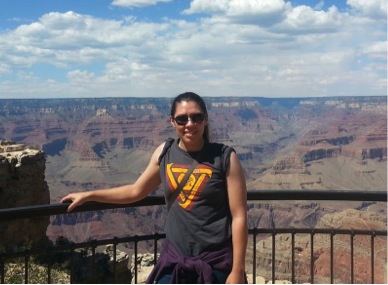
Julie is currently a graduate student at Arizona State University, pursuing a doctorate in planetary science. Julie earned her Bachelors degrees in aerospace engineering and geological sciences from the University of Texas at Austin in 2008. From 2008-2013, she worked as a human spaceflight engineer/manager for NASA at the Johnson Space Center, developing technologies for recycling water on next-generation spacecraft. Her research interests include the search for water on planets (especially Mars) and the relevance of in-situ resources for future human exploration missions. She is also a Pancam calibrator and Payload Downlink Lead (PDL), and has performed several image analysis projects for both Opportunity and MSL. In her "free" time, Julie enjoys art, reading/writing, and the outdoors, but spends most of her time pursuing fitness and martial arts. She trains in Brazilian jiu-jitsu, muay thai, boxing, wrestling, and mixed martial arts as often as time allows. Any future collaborators should not be surprised by the presence of black eyes and/or bruises.
KRISTEN PARIS
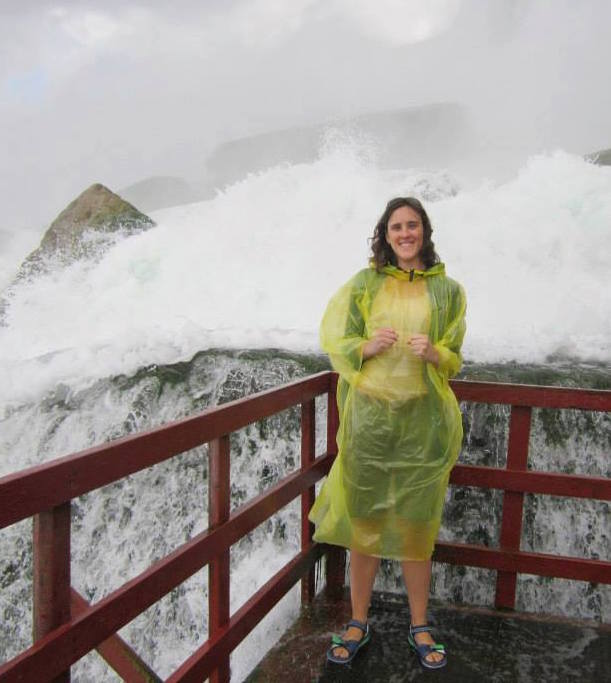
Kristen received Bachelor of Science degrees in Biology and Geology from the University at Buffalo and a Master's of Science degree from Arizona State University. After finishing her Master's, she stayed at ASU and started working on the instrument operations team for the Lunar Reconnaissance Orbiter Camera. While there, she automated herself out of a job so she could do other cool stuff. Currently, she is still working on the LROC Operations team and has now taken on roles with the Pancam, Mastcam, and Mastcam-Z teams.
JON BEANS PROTON
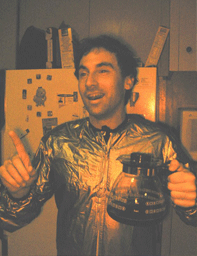
Jon received a bachelors in physics and a masters of engineering in mechanical and aerospace from Cornell. After he finished his degree, he started working for Steve Squyres on the Near Earth Asteroid Rendezvous mission, pointing the XGRS instrument at the asteroid Eros. When that finished, he worked on the Cassini mission, designing pointing sequences for the ISS camera, as well as helping out with the MER mission in its design phase. Since Spirit and Opportunity landed, he has been working as a Pancam payload uplink lead, writing sequences to takes images of Mars with Pancam.
MELISSA RICE
ANDREW RYAN
Andy is currently a PhD student working with Phil Christensen on Mars thermal infrared remote sensing projects. He has supported the MER team as a Pancam Payload Downlink Lead (PDL) since 2014. His primary research involves laboratory measurements of heat flow through planetary regolith simulants to improve our ability to interpret temperature measurements of planetary surfaces. He is currently a member of the OSIRIS-REx team and is conducting heat flow measurements in support of the mission. In his free time, Andy enjoys playing guitar, cooking, brewing beer, and hiking.
DMITRY SAVRANSKY

Dmitry Savransky started working for Jim Bell while still an undergraduate at Cornell University. Starting with developing code for processing Themis visual data from the Odyssey mission, he later also joined the MER Pancam calibration crew. He received his BS in Mechanical and Aerospace Engineering in 2004, and completed his Masters of Engineering in January of 2005. Since then, he has become a full time member of the Pancam imaging team and is currently working on true color representation of MER Pancam data, continuing his work with Themis data processing, and pursuing various other projects such as this website. He participates in planning operations as a PDL and PUL. In his newly found copious free time, he enjoys skiing, biking, skating, playing the clarinet and piano, and spending quality time with his rapidly growing collection of classical science fiction.
MARIEK SCHMIDT
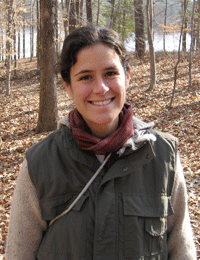
Mariek Schmidt is a Postdoctoral Fellow at the Smithsonian's Natural History Museum in Washington, DC. She got her PhD from Oregon State University in volcanology and igneous petrology. Mariek has a lot of terrestrial volcanology experience, particularly in the Three Sisters Volcanic Field in Oregon. This is her first mission, but she has jumped right in, working with the Pancam, APXS, and Moesbauer spectrometer, as well as in interpreting the volcanic rocks in Gusev Crater seen by the Spirit rover. In her free time, Mariek hikes or runs with her dog and loves cooking vegetarian food.
FRANK SEELOS
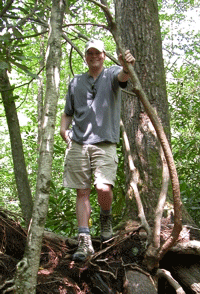
Frank Seelos graduated from Washington University in St. Louis with a Ph.D. in Earth and Planetary Sciences in May, 2005. While a graduate student working with Ray Arvidson, Frank had the opportunity to staff a few graveyard shifts in the MER pre-flight camera calibration effort. Evidently he didn't do too much damage to the camera calibration as the Pancam PEL asked him to stay on as a PDL during mission operations. Frank served as a PDL into the extended mission, and was self-promoted to "PDL emeritus" in late 2004. He currently holds a post-doctoral research position at the Johns Hopkins University Applied Physics Laboratory working with Scott Murchie and the Compact Reconnaissance Imaging Spectrometer for Mars (CRISM) onboard the Mars Reconnaissance Orbiter (MRO). Frank has yet to fully recover from the debacle of the 2004 World Series, and remains convinced that a home run should be required to fly farther than he can hit a sand wedge.
PAMELA SMITH
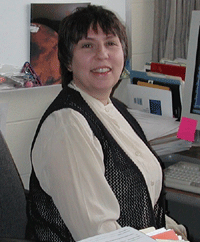
Pamela Smith is on the research staff in the Cornell Department of Astronomy. She received a B.S. degree in Communication Arts from Cornell and wrote for several newspapers and radio stations before immersing herself in matters of the Solar System. She designed the Athena website, wrote most of the content on its pages, and has enjoyed many hours in the Pancam room calibrating images from Mars. She is also on Cornell's Cassini team, working with imaging software for the ISS cameras. A fan of science fiction ever since the days when monsters first roamed Maple Street in "The Twilight Zone," she uses her vivid imagination to fuel a non-stop passion for screenwriting.
JASON SODERBLOM
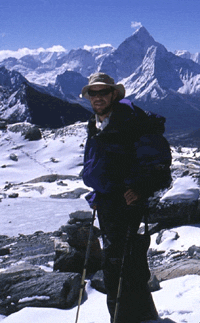
Jason Soderblom is a graduate student in the Cornell University Astronomy Department working with Jim Bell. He received his Bachelors degree with honors in Engineering Physics from the University of Arizona in 2000. In 2001 after taking a year to travel to such places as Alaska, Chile, Nepal and India he began his studies at Cornell. His current work focuses on studying the interaction of light with solid surfaces to learn about nature of the surface, composition, particle sizes, coatings, etc. Such information offers insight into the history of a material and the climates it might have been exposed to sometime in its past. He is a member of the Pancam imaging team on NASA's Mars Exploration Rover (Athena) missions. He is an avid outdoorsman who enjoys hiking, skiing, rock climbing, rafting and sailing.
JASCHA SOHL-DICKSTEIN
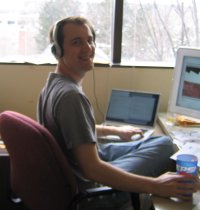
Jascha Sohl-Dickstein began working for Jim Bell as a Pancam team member shortly after graduating from Cornell in 2001 with a BA in physics. Under the benevolent supervision of populist programming lead Jonathan "j-bag" Joseph, Jascha was responsible for the development of many of the Pancam calibration data tracking and data analysis software tools. In addition he works on physical modeling of Martian dust, spent time toiling in the calibration mines of southern California prior to landing, and like everyone else on the project, took on many many odd jobs and responsibilities not captured well in a short list. Although he loved working on the rovers, Jascha left the project in 2005 to pursue a PhD in biophysics at UC Berkeley. He is currently doing research on sparse coding models with Bruno Olshausen in Berkeley's Redwood Center for Theoretical Neuroscience, though his permanent lab home remains uncertain. When not working on MER or laying the theoretical foundations for Skynet, Jascha likes to travel, build impractical contraptions, sail and play ultimate.
ROB SULLIVAN
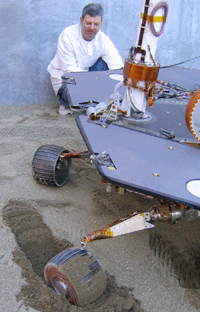
Rob Sullivan is a Senior Research Associate at Cornell. He has spent much of his career involved with active NASA flight projects and analysis of data returned from fly-bys, orbiters, and landers sent to asteroids, other planets, and their satellites. Rob has been involved with Galileo (mission to Jupiter, it's satellites, and a couple of asteroids along the way), Mars Pathfinder, Mars Global Surveyor, and Mars Express. For MER, Rob has been a Pancam Payload Uplink Lead (PUL) early in the mission, a Pancam Payload Downlink Lead (PDL), and a PUL and PDL for the Microscopic Imager and Engineering cameras (Navcams and Hazcams), as well. He also has an independent Participating Scientist investigation which focuses on physical properties of soils and aeolian (wind-related) features and processes. Rob is the science team lead for wheel trenching on both rovers.
DALE THEILING

Dale worked as a Pancam Payload Uplink Lead (PUL) with the MER mission (and tried to help out with the computers here and there) from 2006 until 2011. He earned his B.S. in Physics and M.S. in Astrophysics from Clemson University. During and after grad school, he was an intern with the FBI, taught at several colleges and universities, was Observatory Director at the University of South Carolina, did some archeology for New South Associates, and observed at Lowell Observatory with NPOI. He enjoys hiking and traveling, shares a dog, a cat, an old farm, and a newer house with his wife and son, is a fan of science fiction, and has a rubber band ball bigger than your head. He is presently working in Science Operations on the MAVEN mission at the Laboratory for Atmospheric and Space Physics at CU Boulder.
SHANE THOMPSON
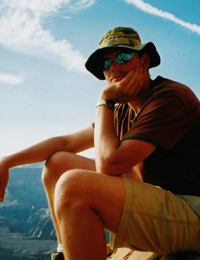
Shane has been on the MER mission as a student collaborator since early 2003. He was first on the team under the Participating Scientist Ron Greeley, at ASU, where he did his undergrad in geology. In 2005, he moved on to grad school at UNR (Reno, NV) where he continues to work on MER mission operations, science analysis, and as Pancam PDL (Payload Downlink Lead) under the advisement of Wendy Calvin. The ever-growing length of this mission and its success has helped him make steps toward his future career that he only could have dreamed about when he first decided to go back to school! He'll finish his Master's degree from UNR this summer and will be moving on to who knows where doing who knows what. But he does know this... He has MER as his foundation for success!!
MICHAEL VETO
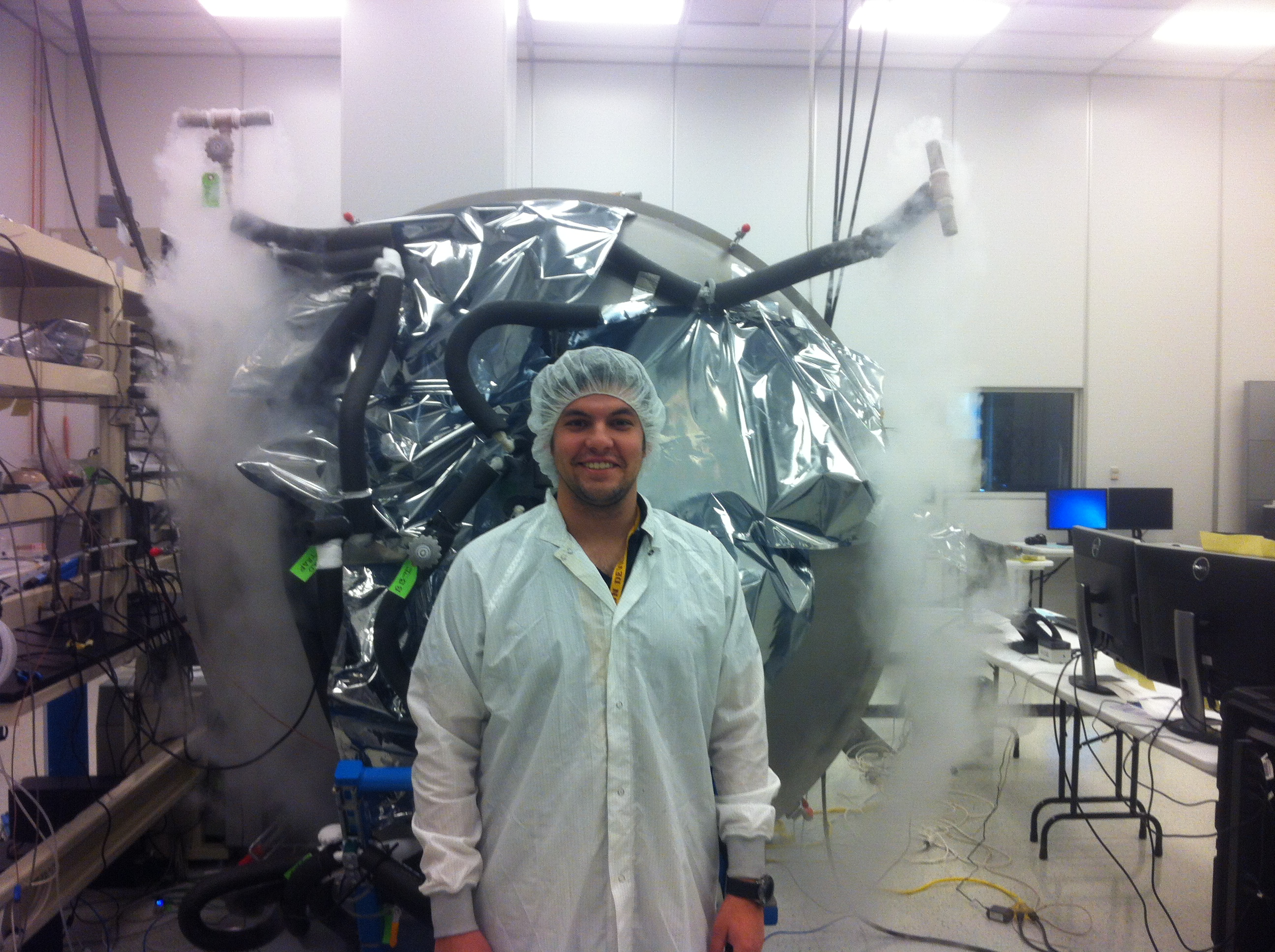
Michael is a PhD student of Planetary Science and Systems Engineering, under the tutelage of Phil Christensen, and is interested in studying Mars and designing instruments to further investigate it. Michael studied at Arizona State University to earn a BSE degree in Aerospace Engineering. As a graduate student, Michael's research involves using THEMIS-Odyssey to investigate the thermophysical properties of impact craters on Mars, developing future infrared instrument technology for E-THEMIS, and designing and building the THESIS instrument suite for the Prox-1 microsat mission that plans to capture VIS and IR images of LightSail-B. Michael has been working as a PDL with Jim Bell at ASU since 2015 and is folding experience working with Pancam into imaging techniques for Prox-1-THESIS. Michael spends his free time latin dancing, maintaining his '66 Ford Mustang, and gardening, and every now and then scuba diving.
ALIAN WANG
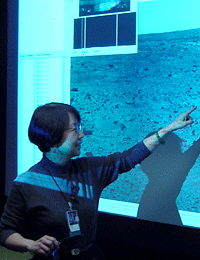
Alian Wang is a spectroscopist, specialized in vibrational spectroscopy, i.e., Raman and mid-infrared spectroscopy. During MER operations, she enjoyed expanding her view into the visible and near-infrared spectral regions, to get into "electronic transition" mode. In addition, she loves pretty pictures - another reason for her to join the Pancam team. Alian's main passion in the MER mission has been the "white stuff," from light-toned rocks to light-toned salty soils, and she's specifically interested in the stability and phase transition pathway of hydrous sulfates under Mars surface conditions. Being a Pancam PDL suits her well, because the beautiful Pancam data reveal related information. While not on MER duty, Alian likes to cook, freeze, or dry out sulfates and take all sorts of spectra from them. She is continuing the efforts of putting Raman spectroscopy into space, e.g., ESA's ExoMars mission, as well as developing sensors to put on rover wheels. To satisfy her other interests, Alian teaches art in a Sunday school, and occasionally writes scripts, edits music, and directs stage plays for local communities.
NATHAN WILLIAMS
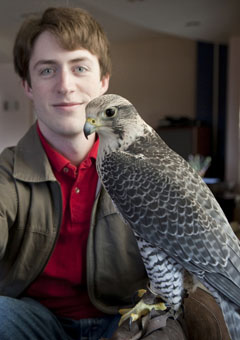
Nathan Williams is currently a Ph.D. student with Jim Bell at Arizona State University and has been supporting the MER team as a Pancam Payload Downlink Lead (PDL) since 2012. Although his primary background is with remote sensing of ground deformation on the Earth and Moon, Nathan has finally seen the light of Mars exploration and has recently been investigating Martian crater morphologies and thermophysical characteristics. He also works with the Lunar Reconnaissance Orbiter Camera to study tectonism on the Moon. In his free time, Nathan is an avid birder and has been known to commune with falcons and other raptors.
MIKE WOLFF
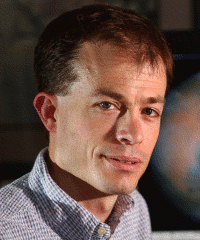
Mike Wolff joined the pancam team after an evening of scholarly analysis with the PEL at the Birmingham (Alabama) DPS meeting. Though details of the PEL's convincing arguments remain unclear, his commitment to Pancam operations has been more-or-less unwavering. Mike's areas of interest do not typically encompass "more stupid rocks", but he has been known to admire the occasional spectacular image of the surface. He may have been the first to embrace the "minimalist" approach to PDL-ing, but remains devoted to avoiding the production of color composites and mosaics. While waiting for the promised "Sky Hemisphere" sequence poolside in Milwaukee (Wisconsin), he works with other atmospheric data, including the occasional few bits from mini-TES. His favorite color is blue.
